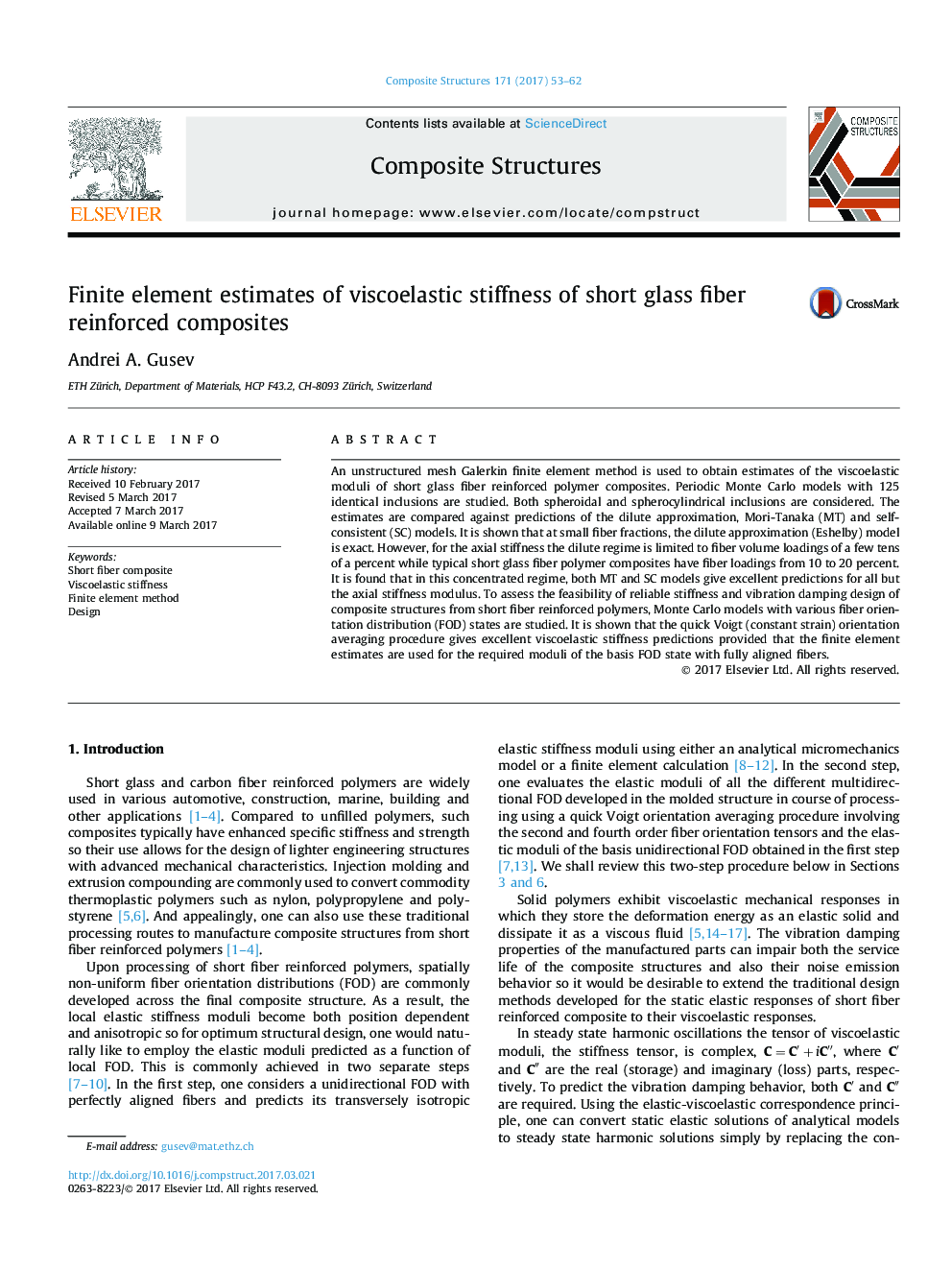| Article ID | Journal | Published Year | Pages | File Type |
|---|---|---|---|---|
| 6479364 | Composite Structures | 2017 | 10 Pages |
An unstructured mesh Galerkin finite element method is used to obtain estimates of the viscoelastic moduli of short glass fiber reinforced polymer composites. Periodic Monte Carlo models with 125 identical inclusions are studied. Both spheroidal and spherocylindrical inclusions are considered. The estimates are compared against predictions of the dilute approximation, Mori-Tanaka (MT) and self-consistent (SC) models. It is shown that at small fiber fractions, the dilute approximation (Eshelby) model is exact. However, for the axial stiffness the dilute regime is limited to fiber volume loadings of a few tens of a percent while typical short glass fiber polymer composites have fiber loadings from 10 to 20 percent. It is found that in this concentrated regime, both MT and SC models give excellent predictions for all but the axial stiffness modulus. To assess the feasibility of reliable stiffness and vibration damping design of composite structures from short fiber reinforced polymers, Monte Carlo models with various fiber orientation distribution (FOD) states are studied. It is shown that the quick Voigt (constant strain) orientation averaging procedure gives excellent viscoelastic stiffness predictions provided that the finite element estimates are used for the required moduli of the basis FOD state with fully aligned fibers.
